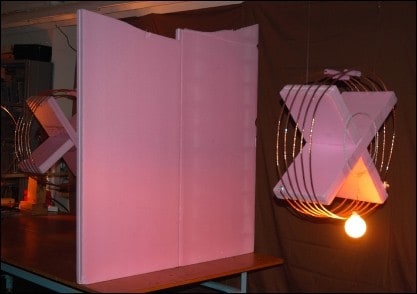The mess of electrical cables that recharge our laptops, mobile phones and PDAs could soon disappear altogether -- at least according to a team of US physicists, who have shown how power can be transmitted without wires using special "resonant" antennas. The researchers used the system to power a 60-W light bulb placed two metres from a wireless transmitter, and say that it could be scaled down for use in portable devices without a loss of efficiency (Science Express doi: 10.1126/science.1143254).

Power without wires isn’t a new concept – in the early 1900s before electricity grids were established, the Serbian inventor Nikola Tesla envisioned a world of wireless power using a network of high-voltage “Tesla coils”. Although his scheme didn’t catch on because of the dangerously large electric fields involved, recent proposals of wireless power employing radiation from a transmitter have begun to rekindle interest. Unfortunately, those that have relied on transmitters emitting in all directions have been too inefficient, and those that have opted for unidirectional transmitters have been impractical for most applications because they need a clear line of sight between transmitter and receiver.
Last year, physicists at the Massachusetts Institute of Technology (MIT) proposed a way to avoid these problems by employing non-radiative “evanescent” electromagnetic waves. These waves are usually generated in addition to the familiar radiative waves used in wireless communications, but decay very quickly as they extend from an antenna. Marin Soljacic and colleagues thought that if the receiver could resonate with the transmitter, the evanescent field would instigate a current between the two. In this way, non-resonant objects placed in the field would neither interrupt the signal nor absorb much of the field’s energy (see related story: “Gadget recharging goes wireless”).
Now, Soljacic’s team have put their idea into practice. Using their theory, they have created a pair of ring-shaped copper antennas. One of these they connected to an electricity supply, while the other they connected to a 60-W light bulb placed two metres away. When they ran an oscillating current through the first, it produced a magnetic field that “resonantly coupled” to the second, thus inducing a current. This current, the MIT team claim, fully lit the bulb with a transmission efficiency of 40%, just as their theory predicted.
Although the antennas demonstrated were over half a metre in diameter, Soljacic and co-workers say that scaled-down versions of the system could be made for portable devices without sacrificing efficiency. This might also enable the design of electronic medical implants that do not need cumbersome wiring.



